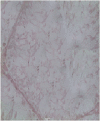Antifertility activity of methanolic bark extract of Aegle marmelos (l.) in male wistar rats
- PMID: 23351957
- PMCID: PMC3556045
- DOI: 10.1186/2008-2231-20-94
Antifertility activity of methanolic bark extract of Aegle marmelos (l.) in male wistar rats
Abstract
Background: Aegle marmelos leaf, seed and fruit from earlier studies is known to affect male fertility in reversible manner. However they had delayed onset and recovery was found to be prolonged. The present study was undertaken with an aim to evaluate the effect of Aegle marmelos bark extract on rats as the extract is found to be a rich source of marmin and fagarine known for reducing male fertility. Three different concentration of methanolic bark extracts of Aegle marmelos (L.) were evaluated for male antifertility activity on albino wistar rats. Methanolic bark extract of Aegle marmelos at the dose of 200, 400, and 600 mg/Kg b.w was administered orally for 60 days. Treatments were stopped thereafter and animals were sacrificed after a recovery period of 30 days. Control animal were administered vehicle (0.5% CMC for 60 days). Lonidamine was used as standard drug to compare the effect of extract.
Results: Methanolic extract causes a dose & duration dependent infertility via reducing reproductive organ weight and serum testosterone levels. Sperm analysis results showed reduction in sperm density, motility, viability and sperm acrosomal integrity without interfering libido and vital organ body weight. Histopathological studies of testes revealed exfoliation of elongated spermatids, nuclear chromatin condensation, degeneration and prominent spaces detected within the germinal epithelium signifying testicular cytotoxicity and necrosis. Time dependent complete infertility was observed in all dose levels. Animals after the withdrawal from treatment, for 30 days showed restoration of the morphological as well as physiological parameters in extract treated rats. Methanolic extract showed lipid lowering activity compared to control, suggestive good candidature of this plant for further studies.
Conclusions: Our studies suggested Aegle marmelos barks methanolic extract as strong candidate for male contraceptive via its ability to produce complete inhibition of pregnancy, rapid restoration of fertility after withdrawal from treatment and its lipid correcting ability proving further beneficial effects.
Figures






References
-
- WHO. World Health Statistics - World Health Statistics indicators. World Health Organization; 2011.
-
- Geoffrey MHW. Development of methods of male contraception: impact of the World Health Organization Task Force. Fertil Steril. 2003;8:1–15. - PubMed
-
- Agrawal SS, Monica K. Isolation charecterisation & anti-fertility activity of the active moiety from the seeds of Ensete Superbum Cheesm (Banakadali) J Nat Reme. 2009;9:12–20.
LinkOut - more resources
Full Text Sources
Other Literature Sources

